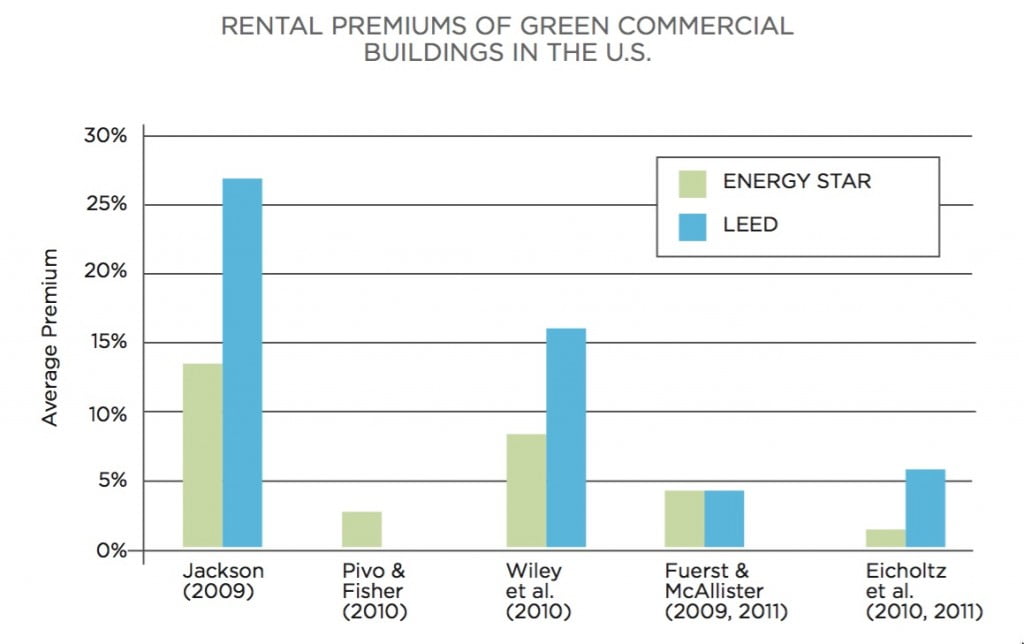Perhaps the biggest obstacle to advancing high-performance commercial buildings has been obtaining additional front-end financing for energy improvements.
Most people agree that buildings with high levels of energy performance, such as zero energy buildings, are more valuable than conventional buildings. According to the Institute for Market Transformation, four factors contribute to higher values for high performance commercial buildings compared to conventional buildings.

Source: Institute for Marketing Transformation, www.imt.org
- Revenue is higher for many high-performance buildings, because tenants are willing to pay more. Studies have shown that rents for these buildings can be anywhere from 3% to 26% higher.
- Occupancy is typically higher, and this can be demonstrated by a detailed analysis of the local market.
- Operating costs are lower due to dramatically lower energy use, leading to more attractive net operating income (NOI).
- Risk is lower, which makes investors, underwriters, and lenders happier. High-performance buildings protect against energy price increases and anticipate advancing building standards that drive up costs for competing properties.
Unfortunately, this additional value is not fully documented in most real estate appraisals. As a result, sale prices are lower than they should be. Appraisers need information and training to pull together valid data to support the true value of these buildings. Professional development courses offered by The Appraisal Institute and Earth Advantage provide a good foundation.
High-performance buildings are increasingly common. Appraisers must be qualified to accurately value these buildings, as lack of qualified appraisers is perhaps the most important obstacle limiting the widespread adoption of zero energy buildings.


2 thoughts on “Value You Can Take to the Bank”